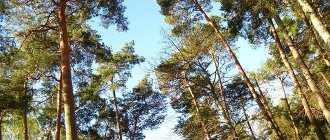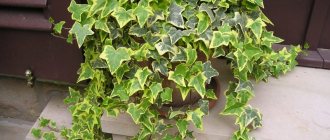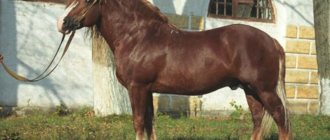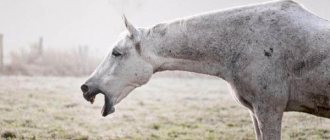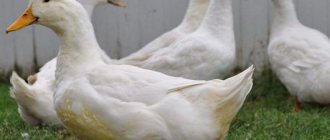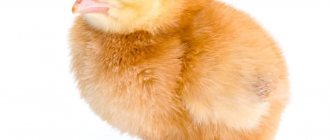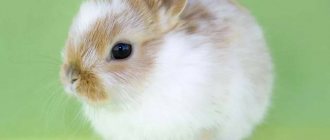Horses are amazing creatures! They walked alongside people through wars, became helpers in the fields, and today they bring joy to many people in communication. It doesn’t matter how long a horse lives, what color, height or breed: a horse requires love.
It is important for any breeder to know how many years his beloved animal can live. Horses are one of the most common domestic animals. There are many breeds of these beautiful, graceful and submissive animals.
Their strength and grace are awe-inspiring. But every owner should know how many years they live, what reasons affect their lifespan and how to care for them in order to extend this time. They are kept as pets, for work, equestrian sport and for a number of other reasons.
Conditions and care
With good care and proper distribution of the load, the animal can live to an honorable age.
First of all, the stable must be clean and dry. Horses cannot stand moist, musty air and often get sick in such cases. In addition, the limbs and joints of these large animals are highly sensitive. The slightest oversight - and they begin to hurt, swell, and various types of inflammation appear.
It is important to keep the area where horses are kept clean and dry. Increased moisture content leads to joint disease. The bones become inflamed and swollen.
At home
Domestic horses have a significantly longer lifespan. On average they live 25-30 years.
It depends on the nature of use:
- Pedigree breeders live up to 30 years, since the breeder pays special attention to them.
- Sports horses live less, 18-20 years. Animals often die from ruptured lungs, cardiac arrest, or stomach colic, which is a consequence of grueling training and microtrauma.
- Workhorses - can live from 10 to 25 years, depending on the load. If the owner competently alternates work and rest, the animal will calmly live to an old age.
Factors influencing longevity
The main reason for longevity is animal care. It doesn’t matter how many years horses live if the owner doesn’t take care of his pet. You can often hear that famous stallions died a few years after they were sold.
This speaks of irresponsibility. If a person decides to buy a horse, he must pay attention to every detail.
The diet is designed in such a way that it contains foods that provide animals with the optimal amount of vitamins and minerals. Generally, the main products for horses are:
- Cereals.
- Hay.
- Freshly cut grass (in summer).
- Compound feed.
- Vitamin and mineral supplements
The feed ration is of great importance. The diet should be balanced and include the following components: hay and straw, grain crops and mixed feed, in the summer - freshly cut grass, as well as vitamins and minerals. It is recommended to release the herd onto pasture, where each individual has access to all types of grass, and provide plenty of water.
Even old animals need physical activity - for example, light training with children or jogging on a cord. Of course, care must be taken to ensure that the horse does not become overtired or injured.
How long do horses live on average?
Information from specialists and horse breeders varies and ranges from 15 to 40 years. There is no specific figure, because the life expectancy of horses of different breeds, living conditions, and activities is not the same.
| Types of horses | Average vital signs | Influencing factors |
| Racing | 7-15 | Constant exhausting training, competitions, stress |
| Heavy trucks (workers) | 17-20 | Monotonous movement of heavy objects |
| Tribal | 20-26 | Caring for purebred specimens, breeding |
| Pony | 40-45 | Calm measured life |
Important! Differences in life expectancy are not only observed between different species. There are cases where a thoroughbred racing stallion lived a short life, but an ordinary working mare on a farm became a long-liver.
Determining the age of a horse using the “Dental Formula”
By external signs you can determine the age of the horse. But the “Dental Formula” gives an error-free diagnosis. Veterinarians have determined that stallions and mares have different numbers of teeth, 40 and 36, respectively. The mare has no fangs.
The age of the animal is determined by the dental formula. To do this you need to know the placement and appearance. Over time, horses' teeth wear out. Each tooth has its own load and external changes. Violation of the structure of teeth leads to erroneous determination of age.
How to determine age?
Determining the exact age of a horse is not easy, especially for those new to horse breeding. This skill is very useful for people planning to purchase an adult animal.
The most accurate method of determining age is by looking at the teeth. In older horses they are yellow and worn out.
Also, when choosing a stallion or mare, you should pay attention to the following nuances:
- Beautiful body, defined muscles, shiny coat, activity - the animal is no more than 12 years old.
- Long, coarse hair grows on the nose and around the lips - a horse over 10 years old.
- Drooping lips and semi-erect ears indicate the venerable age of the horse.
What should a stable look like?
Horse skin does not protect artiodactyls from rain and frost, so animals need a roof over their heads. The stable should be high enough and spacious enough to make the animals comfortable.
The walls of the room should not have cracks and allow the wind to pass through, and the roof should reliably cover the herd from snow and rain.
The temperature in the stable should not fall below +5...+10 °C: freezing of drinking water is not allowed in winter. The stable is divided into separate stalls for each horse, or all animals live in a common room, provided that its volume is large enough.
Organization of care
Keeping a horse at home can be a difficult task for a beginner, so you should carefully study all the rules and features in advance.
The following tools are prepared:
- comb for cleaning coarse dirt;
- hard brush for cleaning wool;
- soft brush for removing dust;
- comb for tail and mane;
- metal hook for cleaning hooves;
- scraper for removing excess moisture from the coat;
- a clean towel for drying wool;
- scissors or an electric clipper for mane and tail trimming.
Hoof cleaning
Special attention is paid to hoof hygiene; they are cleaned with special brushes or hooks with a blunt end. During the procedure, you cannot stand behind the horse, only on the side.
Cleaning is carried out as follows:
- They run the palm down the leg from top to bottom, grab it tightly and bend it at the knee.
- Use a hook to carefully remove stones and dirt.
- Check for injuries.
- They lower their leg.
As a preventative measure, hooves are shoed monthly. This is also done in order to protect the horse’s legs from mechanical damage and prolong the animal’s performance.
You should not do the hoof shoeing procedure yourself; it is better to contact a professional.
Cleaning wool
Cleaning a horse's coat is a mandatory procedure, which must be carried out carefully so as not to damage the animal's skin. The wool is cleaned with brushes or scrapers - first from the left, then from the right side, gradually moving from the head to the back and limbs. To comb the tail and mane, use special combs made of metal or plastic.
Dental care
Only a qualified dentist can determine dental problems. For preventive examinations, he is called once every six months. But the older the horse gets, the more often you should call a veterinarian.
Signs of dental problems:
- incontinence of food in the mouth;
- chewing food slowly;
- refusal to eat;
- chewing the bit.
You won’t be able to solve a dental problem on your own; you can’t file or remove a horse’s teeth yourself. This should only be done by a veterinarian, always using local anesthesia.
Physical exercise
Physical activity should be moderate. You cannot exhaust your horse with excessive training; it may simply not get back on its feet (some leg diseases in horses are incurable).
Bathing
The horse is gradually accustomed to washing with shampoo and rinsing with a hose. The bathing regime is selected individually for each animal, depending on the time of year, physical activity and health. Before the exhibition, after washing the mane is conditioned and fixed with a special stocking.
Vaccination
To maintain the health of the horse and strengthen the immune system, routine vaccinations are required. Vaccinations are administered strictly by a veterinarian.
List of scheduled vaccinations:
- Anthrax - vaccination is carried out annually.
- Tests for SAP and INAN are carried out once a year.
- Leptospirosis - blood tests are performed on animals on breeding farms once every two years.
- Influenza - vaccination is carried out once a year after an initial two- or three-time treatment.
- Dermatophytosis - vaccinated once a year, in addition to the primary treatment, carried out at intervals of 14 days.
- Rhinopneumonia - carried out at the request of the owner.
- Tetanus - an imported vaccine is vaccinated once every 2-3 years, a domestic one - once every 3-5 years.
- Rabies - at the owner's request.
Caring for an old animal
Caring for an older horse is a responsible matter. Such animals need daily quiet walks, constant small physical activity, and special nutrition.
When selecting food, you should take into account the condition of the horse's teeth. With teeth damaged or worn away from age, it is difficult for an old horse to chew hay or other roughage. A special mash is prepared for such animals. It is advisable not to overdo it when caring for an elderly pet. Excessive feeding and decreased physical activity can cause obesity.
If the owner is unable to keep a retired horse, he can hand over the pet to a special shelter for elderly animals, whose workers will try to make the last months of the horse’s life as comfortable as possible.
Physical exercise
Horses used for heavy work or sport can live long lives if their daily routine is properly managed. Exceeding the intensity of the load leads to rapid depletion of the body's resources and various injuries. Hard work should alternate with proper rest.
Attention! Young animals under 2.5–3 years old should not be used for work. This can lead to the development of pathologies of the heart, blood vessels, and other diseases and cause premature death.
Is it possible to increase the lifespan and how?
Every owner wants to extend the life of their pet. Is there a way to do this? Of course, there are no special means that are guaranteed to help significantly extend the life of a horse. In order to make it as long as possible, you should take good care of the animals.
Horses live longer at home than in the wild. People provide them with balanced food at any time of the year, warm shelter from bad weather, and treatment for diseases. If pets receive the necessary care, nutrition, and treatment, then they can live longer. Horses are herd animals, so they do not tolerate loneliness very well.
They definitely need physical activity. However, constant use at races creates overload and has a bad effect on life expectancy. The recipe for longevity of horses is not only good care, but also good attitude from the owners.
Age of a horse by human standards
The age of a horse by human standards is a relative concept; it gives only an average idea. It can be calculated as follows:
- The first year of life corresponds to 12 years in humans,
- the second year is equal to seven,
- the third, fourth and fifth years correspond to the 4th human years,
- all other years are counted as 2.5 years for a person.
Thus, the life record of a horse recorded in Russia - 32 years - by human standards would be 98.5 years. And the famous British record holder, who lived 62 years, among people would be considered an almost biblical long-liver - 173.5 years.
Long-lived horses
Old Billy
Let's list the horses that have remained in history as exceptional long-livers:
- The most famous English long-lived horse is Old Bill, born in 1760, lived for 62 years and died on November 27, 1822. His skull is still kept in the Manchester Museum.
- Another long-liver is a pony named Bonnie Lass, who lived in France for a long time - 54 years . His record among ponies has not been broken to this day.
- Among purebred horses, the record holder is considered to be a mare who lived for 46 years and at the age of 42 foaled her thirty-fourth baby.
- The English thoroughbred gelding Duke Tango lived in Australia for 42 years .
- Irish heavy truck Shane - lived 51 years and died in 2004.
- In our country, the sports horse Budynok, who lived for 32 years , and the Arabian brood mare Sahara, who died at 31 .
These are not all cases of longevity of horses. Previously, such age records were not kept, so there may be other surprising cases that only the owners knew about.
Parasite Control
A comprehensive parasite control program started when the animal is young is critical to long-term health.
Damage from parasites is cumulative, meaning that over many years, scars develop in the gastrointestinal tract where worms have attached to the tissue, thereby narrowing the passage of the intestines.
The prolonged presence of parasites in a living body will certainly lead to serious health problems, including possible fatal colic.
Horse teeth: structure and features
Horses of any breed have the same number of teeth: an adult stallion has 40, and a mare has 36. Experienced horse breeders determine the age of the animal based on the condition of the oral cavity. As a rule, horses have literally all their teeth ground down by the age of 12. This process is influenced by several factors: quality of nutrition, defects in the location of the upper and lower jaws.
Incisors
There are 12 upper and lower incisors in total; they can be permanent or primary. They can be distinguished by their shade and size: the permanent ones are larger and stand out in a yellowish color. Incisors are divided into three types:
- the hooks are located in the center;
- the middle ones sprout on both sides of the hooks;
- edges.
The animal cuts off greens with its incisors, grabs food and partially crushes the food. It is with the incisors that horses can bite painfully.
Fangs
This species is considered a vestigial because these teeth are not involved in chewing food. All animals have deciduous canines, but most adult mares (approximately 96%) do not have canines. Animals' fangs most often erupt at the age of 4-5 years. However, there are exceptions when eruption occurs earlier - at 2 years, or later - at 7-8 years.
The fangs grow in a sharp shape, with a rough inner surface and a smooth outer surface. As a rule, the canines erupt close to the incisors, and as the horse matures, they move away from the front teeth and turn around a little. At the same time, the inner surface loses its roughness and becomes smoother.
The upper canines in adult animals wear down to the gums, and the lower ones become blunt and become a little longer. The presence of stones on the tusks indicates the considerable age of the horse.
Permanent teeth
Each horse has 12 molars, 6 in the upper and lower jaws. An empty area of gums separates the molars from the incisors and canines. Molar teeth are divided into milk teeth - premolars (changed in an animal at the age of 2-3 years) and permanent teeth.
Constants grow in horses at different ages. The first ones appear in 10-month-old foals. They then germinate at the age of 20 months. And the last molars appear in three-year-old horses. Since eruption lasts for several years, this feature makes it possible to approximately determine the age of the animal. It is the molars that are involved in chewing large and rough food.
How to properly care for an elderly pet?
An old horse needs care. Particular attention should be paid to its nutrition. The teeth of elderly pets are worn down, so rough food is excluded from the diet. Instead of hay and straw, they offer liquid mash and steamed grain.
An old horse should not be deprived of daily exercise.
In good weather, she should be outdoors for at least 2–3 hours. If there are no health problems, veterinarians recommend giving animals moderate exercise.
You can walk at light gaits for 30–50 minutes.
The main thing in this matter is regularity. Sick animals should receive veterinary care.
Do horses meet their old age?
Do horses live to old age? According to statistics, horses have about a 50/50 chance of dying from old age. Very often, owners decide to euthanize the animal in order to relieve the symptoms of various diseases, such as constant colic and pain. This decision is made by everyone himself, but experts consider it more humane than allowing a suffering animal to live.
Older individuals have a weakened immune system, which makes it more difficult for the body to fight various diseases. Therefore, every disease will require immediate veterinary care, otherwise the animal’s lifespan will be significantly reduced. Only a small percentage of horses live out their old age, dying peacefully in their sleep.
Many horses do not live to see their old age
Thus, horses can live quite a long life. The duration depends only on the conditions in which they live and the quality of care that people provide to them. Most often, horses live up to 20-30 years, however, you can significantly increase this period. The main thing is to take care of your animal and take care of it not only during periods of special activity, but also during the aging process, so that it does not suffer from various diseases.
Maximum weight: record horses
Each weight group has its own record-breaking representatives who have gone down in history as the heaviest horses. The largest horses have always been considered the Shire breed, which weighs on average 1400 kg, so it is not surprising that until recently the world record belonged to a representative of this particular breed. It was installed back in the last century, when it turned out that a horse named Samson exceeded the one and a half ton mark, and his height was more than two meters.
However, not so long ago this record was broken by a Belgian horse named Big Jack, whose weight exceeded as much as 2600 kg
The no less famous Australian horse named Nobby can boast of slightly lower figures, which, although it weighs about 1300 kg, attracts attention with its height - 2.05 meters
Read more about how to find out your weight without scales.
As you can see, the weight of horses is an important criterion for their assessment and directly affects the fatness of the animal. For horses to feel good, they must be well-fed and well-groomed, which is externally manifested in rounded shapes and shiny coat.
Lifespan of wild horses
In their natural habitat, horses rarely reach old age. This is explained by the fact that they constantly fight for their existence not only with predators, but also with the vagaries of the weather.
Wild horses are in no way protected from temperature fluctuations; they are forced to endure intense heat and bitter frosts, and also constantly obtain food and water for themselves. In winter, you generally have to get food from under the thick snow cover. Predators also contribute to wild horse mortality.
Another reason for the early mortality of wild horses is their susceptibility to various viral, infectious and cold-related diseases, as well as infection with helminths and other parasites. In such cases, the youngest and weakest animals die first.
The lifespan of horses in the wild depends on the climate of their habitat. It has been noted that in conditions of warm temperatures and a rich natural food supply, these animals live on average 7-10 years longer than horses living in harsh hot or cold areas with poor food. An interesting fact is that habitat has no effect on disease incidence. It is the same in both comfortable and harsh conditions.
A wild horse like a mustang lives on average ten years, and extremely rarely overcomes the fifteen-year mark.

